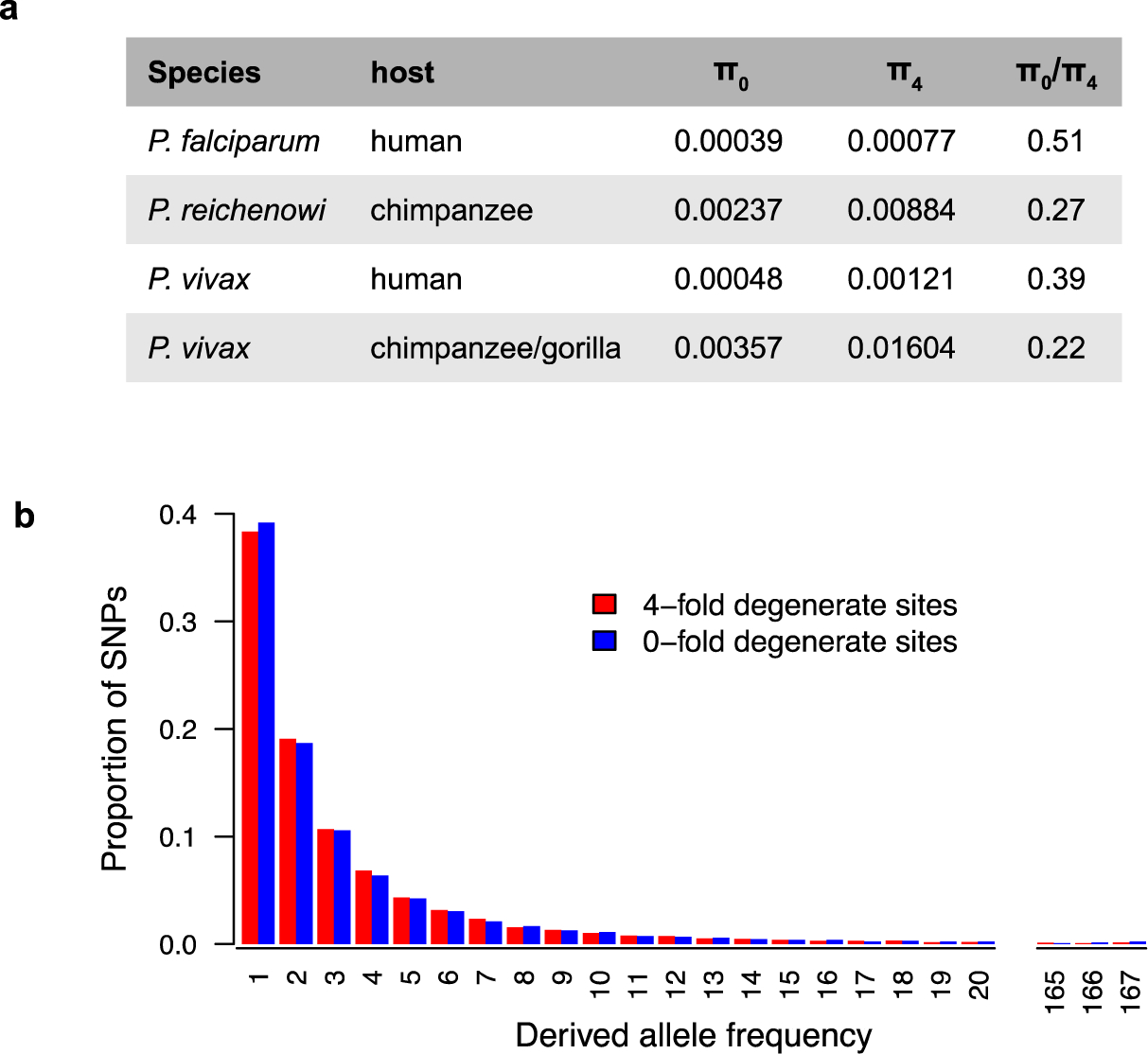Figure 6.

Excess of nonsynonymous polymorphisms in human versus ape Plasmodium parasites. (a) The mean pairwise diversity at zero-fold (π0) and four-fold (π4) degenerate sites is shown for P. falciparum and P. reichenowi as well as human and ape P. vivax derived from published data (2, 75, 105, 124) Both human parasites have much higher π0/π4 ratios than their ape counterparts, indicating a relative excess of nonsynonymous polymorphisms. (b) Site frequency spectra of polymorphisms at zero-fold degenerate (blue) and four-fold degenerate (red) sites in human P. vivax show almost identical patterns, indicating relaxed selection on nonsynonymous polymorphisms. Data were derived from 197 human P. vivax strains from southeast Asia (105) and processed as described (75).
